Potřebujeme váš souhlas k využití jednotlivých dat, aby se vám mimo jiné mohly ukazovat informace týkající se vašich zájmů. Souhlas udělíte kliknutím na tlačítko „OK“.
ASTM D6364-06(2011)
Standard Test Method for Determining Short-Term Compression Behavior of Geosynthetics
Automaticky přeložený název:
Standardní zkušební metoda pro stanovení Short-Term komprese chování geosyntetik
NORMA vydána dne 1.10.2011
Informace o normě:
Označení normy: ASTM D6364-06(2011)
Poznámka: NEPLATNÁ
Datum vydání normy: 1.10.2011
Kód zboží: NS-34833
Počet stran: 6
Přibližná hmotnost: 18 g (0.04 liber)
Země: Americká technická norma
Kategorie: Technické normy ASTM
Kategorie - podobné normy:
Anotace textu normy ASTM D6364-06(2011) :
Keywords:
compression, deformation, geocomposite, index test, yield point, ICS Number Code 83.140.99 (Other rubber and plastic products)
Doplňující informace
| Significance and Use | ||||||||
|
The compression behavior test for geosynthetics is intended to be an index test. It is anticipated that the results of the compression behavior test will be used to evaluate product. The results of the analyses may also be used to compare the relative compressive yield points of materials that exhibit a detectable compressive yield point. It is anticipated that this test will be used for quality control testing to evaluate uniformity and consistency within a lot or between lots where sample geometry factors (for example, thickness) or materials may have changed. Note 1—This is a one-dimensional test for compressive loading of a geosynthetic(s) in one plane. The compressive yield point of geosynthetics may be evaluated from the stress/strain relationship. Many materials exhibit compressive deformation but may not show a distinct compressive yield point. This test method can be used to evaluate the short-term stress/strain behavior of geosynthetics under compressive stress while loaded at a constant rate of deformation. This test method may be used for acceptance testing of commercial shipments of geosynthetics but caution is advised because interlab testing is incomplete. In the case of a dispute arising from differences in reported test results when using this test method for acceptance testing of commercial shipments, the purchaser and the supplier should conduct comparative tests to determine if there is statistical bias between their laboratories. Competent statistical assistance is recommended for the investigation of bias. As a minimum, two parties should take a group of test specimens from material shipped to the project. The test specimens should then be randomly assigned in equal numbers to each laboratory for testing. The average results from the two laboratories should be compared using the Student's t-test for unpaired data and an acceptable probability level chosen by the two parties before the testing is begun. If bias is found, either its cause must be found and corrected or the purchaser and supplier must agree to interpret future test results in the light of the known bias. |
||||||||
| 1. Scope | ||||||||
|
1.1 This test method covers the procedures for evaluation of the deformations of a geosynthetic or combination of geosynthetics (that is, geocomposite (excluding geotextiles, geomembranes, and geosynthetic clay liners)) under short-term compressive loading. This test method is strictly an index test method to be used to verify the compressive strength consistency of a given manufactured geosynthetic(s). Results from this test method should not be considered as an indication of actual or long-term performance of the geosynthetic(s) in field applications. 1.2 Since these geosynthetics may experience muti-directional compressive loadings in the field, this test method will not show actual field performance and should not be used for this specific objective. The evaluator of the results should also recognize that the determination of the short-term single plane compressive behavior of geosynthetics does not reflect the installed performance of synthetic drainage systems and, therefore, should not be used as the only method of product specification or performance with respect to synthetic drainage systems. 1.3 This standard does not purport to address all the safety concerns, if any, associated with its use. It is the responsibility of the user of this standard to establish appropriate health and safety practices and to determine the applicability of regulatory limitations prior to use. 1.4 The values in SI units are to be regarded as the standard. Values in inch-pound units are provided in parentheses for information. |
||||||||
| 2. Referenced Documents | ||||||||
|
Podobné normy:
Historická
1.9.2011
Historická
1.3.2009
Historická
1.8.2014
Historická
1.11.2010
Historická
1.12.2011
Historická
1.3.2007
Doporučujeme:
EviZak - všechny zákony včetně jejich evidence na jednom místě
Poskytování aktuálních informací o legislativních předpisech vyhlášených ve Sbírce zákonů od roku 1945.
Aktualizace 2x v měsíci !
Chcete vědět více informací? Podívejte se na tuto stránku.


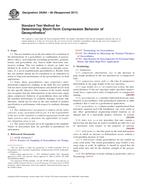
 ASTM D4020-11
ASTM D4020-11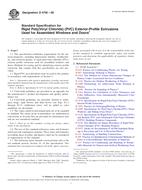 ASTM D4726-09
ASTM D4726-09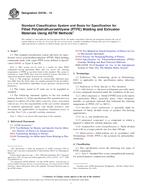 ASTM D4745-14
ASTM D4745-14 ASTM D4803-10
ASTM D4803-10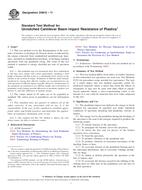 ASTM D4812-11
ASTM D4812-11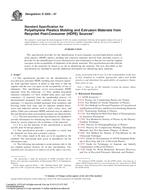 ASTM D5203-07
ASTM D5203-07
 Cookies
Cookies
